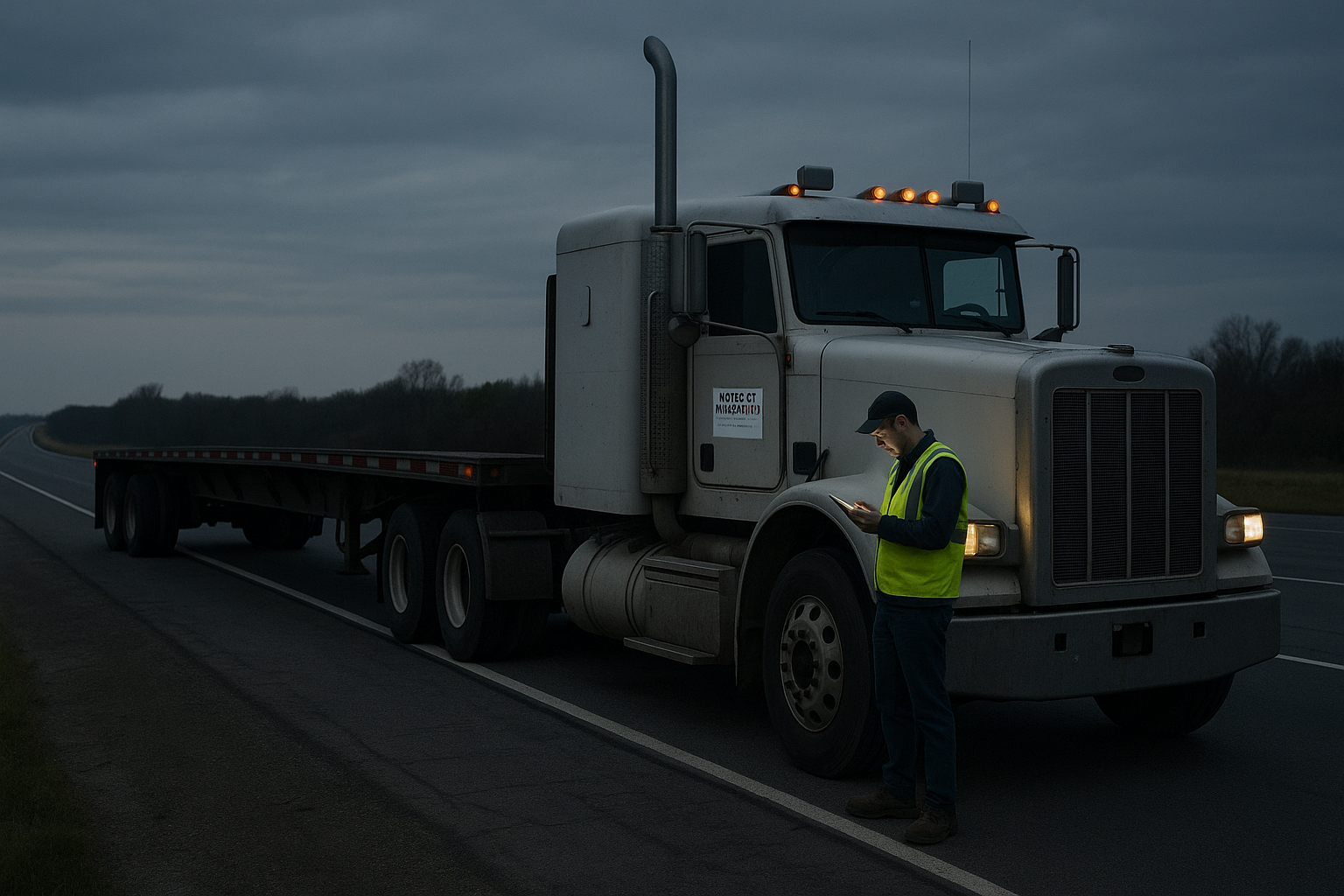Another day, another trucking company collapse. Montgomery Transport LLC—a Birmingham flatbed hauler that survived for decades—abruptly filed Chapter 7 bankruptcy this week, leaving 1,000 employees without jobs and drivers scattered across America's highways wondering how they'll get home.
I've covered transportation for years, and honestly, this feels like watching a slow-motion pile-up that nobody bothered to prevent.
The Alabama-based outfit's demise isn't exactly shocking to industry watchers. Flatbed carriers operate in that precarious space where construction, manufacturing, and industrial production meet—and those sectors haven't exactly been thriving lately. When steel shipments slow down, flatbed trucks sit empty. Pretty simple equation.
"We got the notification Thursday morning," said Marcus Rivera, a Montgomery driver I reached by phone somewhere in Tennessee. "No warning, no nothing. Just 'we're done, truck's not ours anymore, figure it out.' Twelve years with the company and that's what I get."
The trucking industry has this maddening habit of shooting itself in the foot. During the pandemic shipping frenzy—remember when finding toilet paper was like striking gold?—rates skyrocketed. Carriers expanded fleets, owner-operators mortgaged houses to buy trucks, and everyone thought the good times would never end.
They always end.
By mid-2023, freight volumes had crashed back to earth while capacity remained bloated. Basic economics took over from there. Too many trucks, not enough cargo... you don't need an MBA to figure out what happens next.
Montgomery isn't some isolated case, either. Last year saw Yellow Corporation's spectacular implosion, which put 30,000 people out of work. Then there were hundreds of smaller carriers—many with decades-long histories—that simply disappeared with barely a mention in industry publications.
What makes this particularly brutal (and this is something nobody in Washington seems to be talking about) is the ripple effect across Middle America. These aren't just statistics; they're families with mortgages in places where good-paying jobs aren't exactly abundant.
Look, freight transportation isn't sexy. It doesn't have the appeal of tech startups or the glamour of finance. But it's the circulatory system of our entire economy. When trucks stop moving, everything from your Amazon packages to the lettuce at your grocery store feels the impact—eventually.
For Montgomery's former employees, the timing couldn't be worse. The broader transportation sector has been hemorrhaging jobs for months, meaning they'll be competing against thousands of other displaced workers with similar skills.
Some analysts have tried linking this to recent tariff policies, but that's a stretch at best. Montgomery's problems—like most in the industry—stem from the basic economic factors that have been building for years: overcapacity, rising insurance costs, expensive equipment, and cutthroat competition that drives rates below sustainable levels.
"We've been operating at break-even or worse since last summer," a former Montgomery executive told me, requesting anonymity because he's not authorized to speak about the bankruptcy. "Fuel costs come down a bit, but then insurance jumps 30 percent. Fix that problem, and suddenly your equipment leases reset at higher rates. It's like playing whack-a-mole with your profit margin."
The highways keep humming, though. They always do.
For the survivors—companies with solid balance sheets and operational discipline—there might eventually be opportunity in this carnage. Fewer competitors means more freight per truck, which should, theoretically, drive rates back up.
That's cold comfort for the 1,000 Montgomery workers now updating résumés and explaining to their families why the steady paycheck isn't coming anymore.
As I was finishing this article, I received a text from Rivera, that driver I mentioned earlier: "Found a ride home with another trucker. Truck's getting repossessed from the truck stop. Seventeen years driving and I've never seen the industry this bad."
Sometimes, stories don't need neat conclusions. This one certainly doesn't have one.
